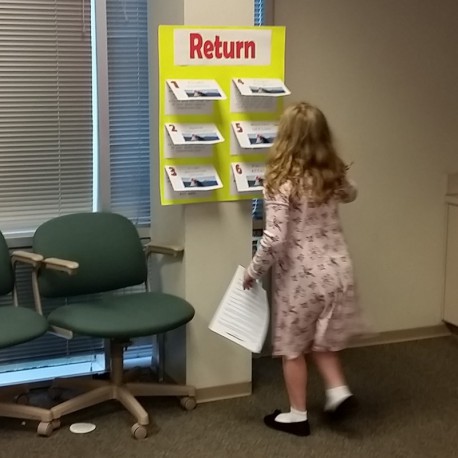 View larger
View larger
Trip to Mars
New activity
Participants play a game that steps through a human mission to Mars, to learn about the variety of people on the ground supporting missions, and the factors that can affect a mission outcome.
Open Activity
How-to Video
Teacher's Guide
Provides classroom connections, key concepts, connections to science standards, and additional resources.
-
Rating
-
Participants Enjoyed the ActivityParticipants Learned from This ActivityActivity Instructions Were Clear and Easy to FollowWould Recommend
Related Programming Resources
Reviews
Trip to Mars
A variety of ages enjoyed this game. Appropriate for elementary grades through adult!
Kids had fun!
We enjoyed this activity at our library's summer program last week. The kids enjoyed brainstorming what they might need to survive a trip to Mars and they definitely enjoyed running from station to station to see if they had successfully completed their mission!
Missions to Mars ain't like dusting crops, kid!!
This is definitely one of the most popular activities among the participants in my STEAM program. The kids loved it so much, they insisted on playing again at our wrap-up event before breaking for the summer season.
The activity as written is a fun game that takes as little as ten minutes to set-up/explain and about five to actually play. Participants can take part individually or in teams. This activity can also easily be set-up as an unsupervised activity at a learning station (or I guess more accurately FOUR learning stations) as well as a full-on facilitated activity. If planning as a learning station, a brief page of directions for the game should be provided, especially to avoid confusion upon reaching Step 3. As a facilitated activity, I suggest spending the lion’s share of the time fostering discussion about the different roles at each step and whether those roles are performed by actual crew on the mission or at mission control on Earth. I also challenged my group to come up with other positions that might be needed.
When my group decided to replay the game at our wrap-up event, they wanted to make the game more competitive. Since the dice we were using came in green, yellow, and red, we added an extra element to turn the game into team play: a three-strikes-and-you’re-out rule. Teams are made up of 3-4 players. Each player is responsible for all the rolls at one particular step. Now, upon rolling a result which causes you to “roll again” on a step, you change the color of die you roll. You start with the green die, and then on your first “roll again” result, you start using the yellow die. Next “roll again” moves you to the red die. Come up with “roll again” on the red die, and your mission is a failure and you get bumped from the mission for another team. In addition, if you complete Step 3 and are still using the green die, you can attempt a different part of Step 3. The winning team was the one to have the best record after five attempts, with completing additional parts of Step 3 to break any ties.
Everyone had a blast, and they were already wondering when we could play the game again even after playing for the second time in about a month.
Trip to Mars
This is going to be one of my favorite activities for the kids this summer because it can work for so many age levels if you add more to it -discussion wise for the older- make it it more eye-explanatory for the younger. I am going to implement a debate on the need for funding as well as make jet packs and space helmets for the little kids to wear-pardon the pun but it will be a blast.



